How Do Animals Survive The Winter Cold
Humans winters are all about getting warm within the home and there are many winters activities that humans can enjoy, Even so, for the other species out in the wild, it'south a struggle for survival. Many animals adapt to the cold weather having developed multiple defenses against the bitter cold and harshest winters. The animals that live where winters abound harsh and the terrains are rugged have to depend on other defenses. Here are 10 animals that thrive in extremely cold temperatures, prevailing over their natural habitats to live in such frosty conditions. Here is a list of top 10 cold-weather animals.
Cold Weather Animals
one. Arctic Play tricks
Likewise known every bit a polar play a trick on, the arctic play a joke on is found throughout the Arctic regions in the Northern Hemisphere. Information technology tin survive at temperatures as depression as -58F past burrowing into the footing or snow. Their round body, brusk muzzle, and pocket-size ears reduce body surface surface area and consequently exposure to extreme common cold.
Information technology has an insulating layer of thick fur coat that traps a layer of air and preserves torso heat. Furry paws and a keen sense of hearing help them to walk easily on the snow and hunt for prey. Arctic foxes accept white fur that helps them cover-up in the ice and snow. Their fur changes colour to brown or grayness in summer to aid them blend in with their environs.

ii. Polar Behave
Polar bears are fully equipped to survive in cold weather conditions and accept multiple surviving techniques. A thick coat of long, heavy, white fur helps them to blend into their surroundings likewise keeping them warm by trapping a layer of insulating air. Their oily fur keeps moisture at bay and protects information technology from frigid waters. A layer of blubber directly below the skin provides insulation from the biting cold. Polar bears take big paws with furry soles to assistance them walk easily on snow and ice. It has been classified every bit a vulnerable species due to global warming.

As well Read: Top 10 Carnivorous Bears In The World
three. Beluga Whale
Beluga whales are native to Arctic and Subarctic seas. Also known as white whales due to their all-white colour which helps them to blend in their icy habitats. The species is similar to narwhals where the dorsal fin is absent-minded on their bodies and hence reducing the body weight which volition help in reducing body surface surface area and thus preserving body heat. Beluga whales accept a substantial corporeality of blubber which helps them to survive in the freezing waters. The Beluga whales take an echolocation organ, known as melon, at the forepart of their heads which help them discover blowholes nether canvass ice while hunting and pond under extensive ice sheets. They survive on a nutrition of fish, crustaceans, and invertebrates.

4. Caribou
Caribou is a Rudolph that tin be easily recognized by the red-nosed and looks adorable. The creature species is native to the Chill, subarctic, and mountainous regions of North America, Europe, and Siberia. The large antlers species has large & hollowed hooves grip to the ground that can assist them to travel and survive on water ice and even dig through the snowfall. Talking near the advent, they have a furry glaze and undercoat is thick with long and hollow hairs.
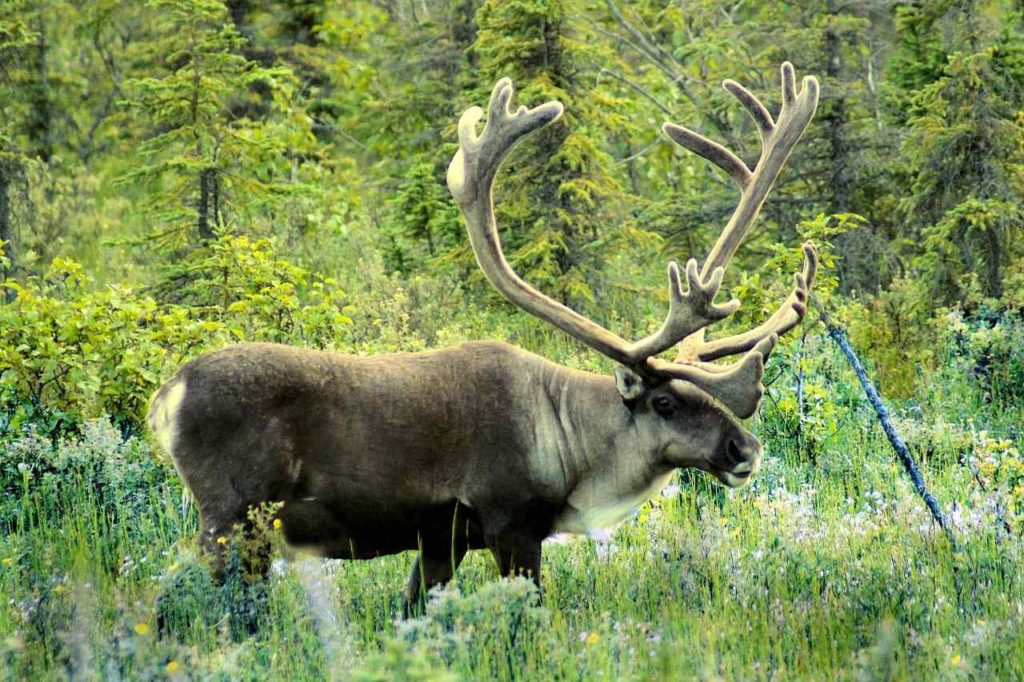
Also Read: 12 Nigh Astonishing Horns In The Animal Kingdom
5. Narwhals
The medium-sized whale species is native to the Arctic region. The species can be hands recognized by the forehead melon and short snouts. They don't accept a dorsal fin that helps them to preserve body heat and besides help them in pond with ease under ice sheets of the region while hunting for flatfish. Too, the blubber layer on their bodies helps them to keep warm in the frigid Arctic waters. The species is also gifted with a flexible rib cage that can withstand the farthermost pressure of the deep sea waters. Narwhals can likewise minimize oxygen consumption and shop oxygen for long periods.
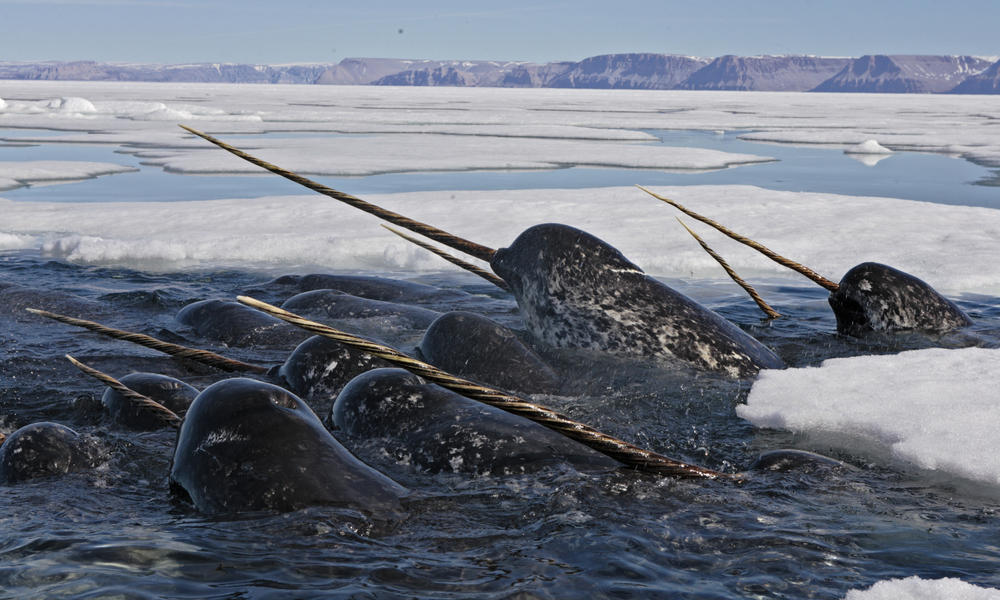
half dozen. Walrus
Walrus is native to the N Pole in the arctic seas. These are usually seen in the shallow waters above continental shelves and loves to eat shrimps, venereal, mollusks and soft corals. Talking nigh the advent, they have a massive blubbery body that keeps it warm and cozy in the frigid Chill waters where temperatures go downwardly below zero degrees. The long tusks help them to grade holes in the ice and climb out of the h2o on to the ice. Walruses as well utilise their tusks to grade breathing holes from underwater into the ice. Their distinctive whiskers are highly sensitive organs attached to muscles and consisting of blood and nerves. Walruses can conserve oxygen while diving by slowing down their heart charge per unit.
Too Read: xv Best and Largest Aquariums in the World 2018

vii. Musk Ox
Musk OX is one of the animal species that can survive in common cold atmospheric condition conditions. Talking most the advent, the outer layer covers up a 2d and has an insulating coat that helps them to survive in these cold weather. The animal species is mostly seen in Chill Canada and Greenland and loves to eat roots and mosses of the tundra. Their hooves are precipitous for digging through snowfall and water ice for food. They utilize their long, curved horns as a defense against predators. They group together, huddling close to stay warm and protect the herd from predators.
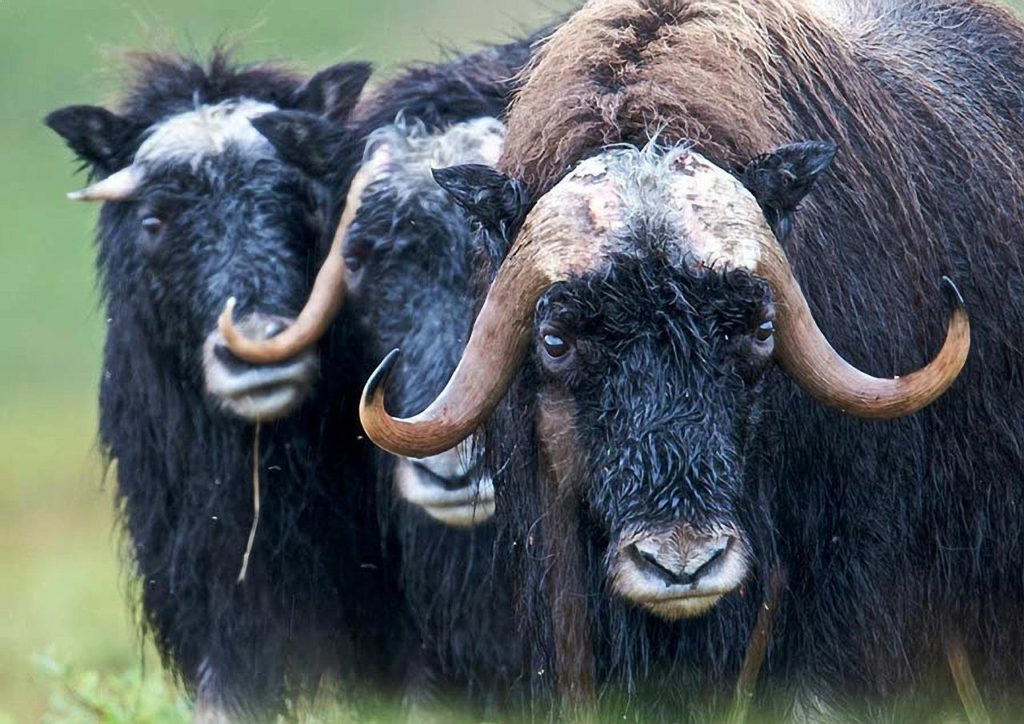
8. Leopard Seal
Likewise known as the sea leopards native to the Antarctic. One of the toughest hunters is equipped with powerful jaws with a muscular body. Talking about the appearance, they have a fur pattern on their bodies that goes night at the acme and lighter on the underbellies. This fur acts as a camouflage in the h2o that can help them to chase fish, penguins, squid and smaller seals with ease. Also, a thick layer of blubber provides them with insulation and protection from the extreme cold.
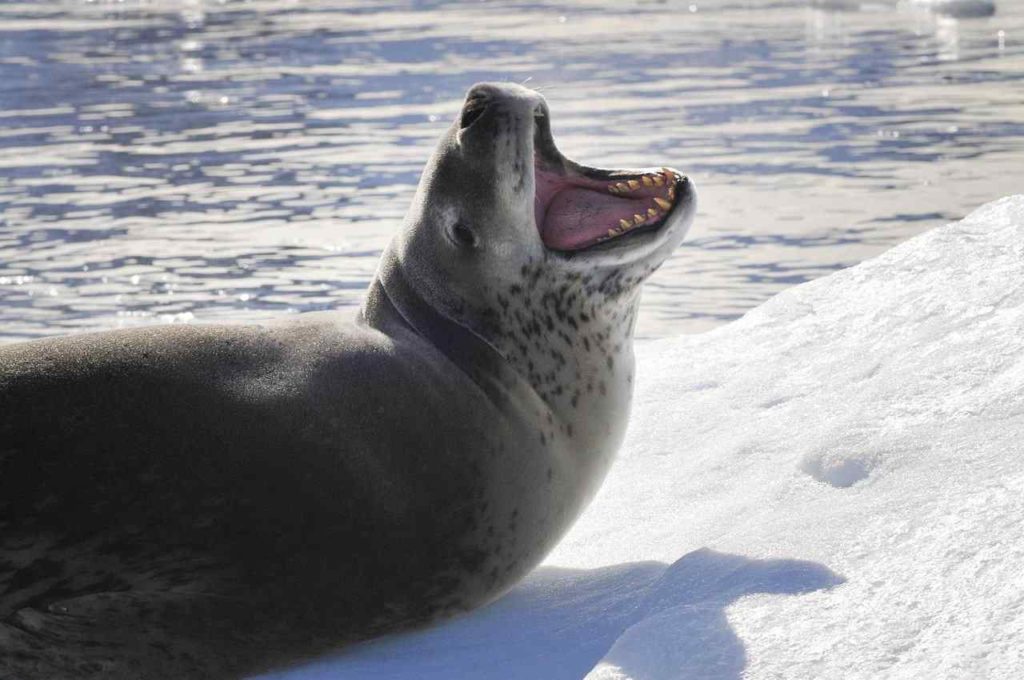
9. Arctic Hare
One of the cold-weather animals, Chill hare's is equipped with shorter ears that help them to save body heat in the common cold conditions conditions. They also have a thick fur coat to help keep it warm. Since the animal species don't hide, it used to dig burrows to stay warm. Also, they survive in these weather condition by excavation plants and twigs out of the snow to eat. Their fur changes colour according to the seasons. They're white in the wintertime which helps cover-up them from their natural predators. Like musk oxen, they huddle together in groups for protection and warmth.
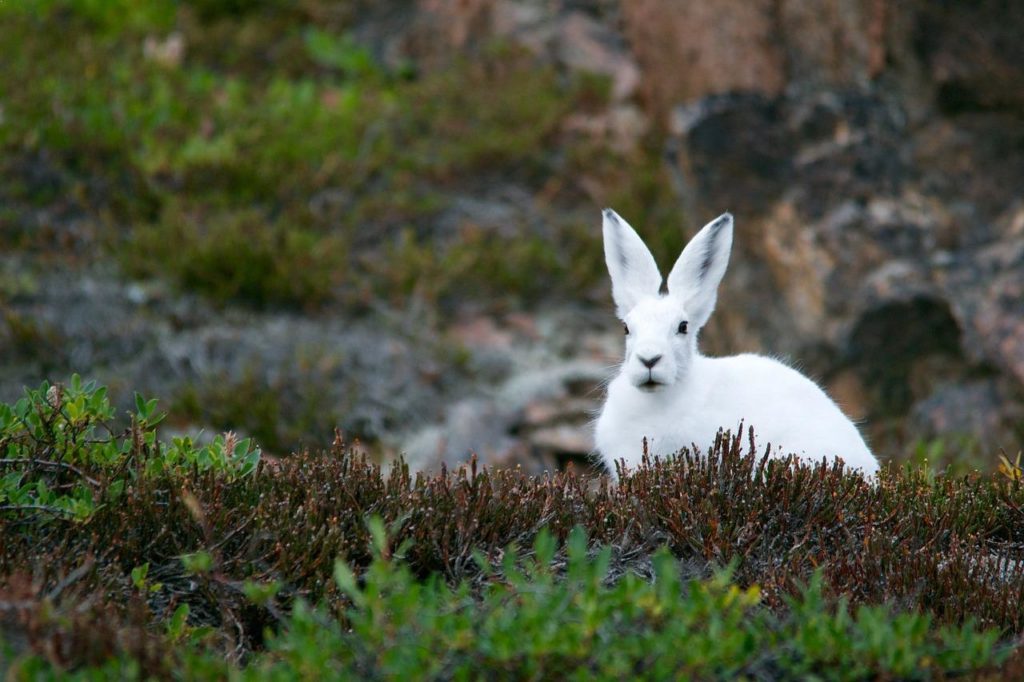
x. Snow Leopard
One of the toughest animals in the world, Snow leopard is native to Cardinal Asia is a large true cat species with a vault forehead. Talking about the appearance, the species has a thick coat which is xanthous in color that helps them to stay warm in the bitter cold of alpine and semi-alpine regions of Primal Asia. A long and flexible tail helps them maintain their remainder on rocky terrain. Their thick tails, containing a large amount of fat, are covered with lush fur and human action as cozy blankets that protect their faces during sleep. They accept small, rounded ears and stocky bodies covered with thick fur, all of which minimize heat loss. Snow leopards are an endangered species due to hunting, poaching and the continued destruction of threatened mountain ecosystems.
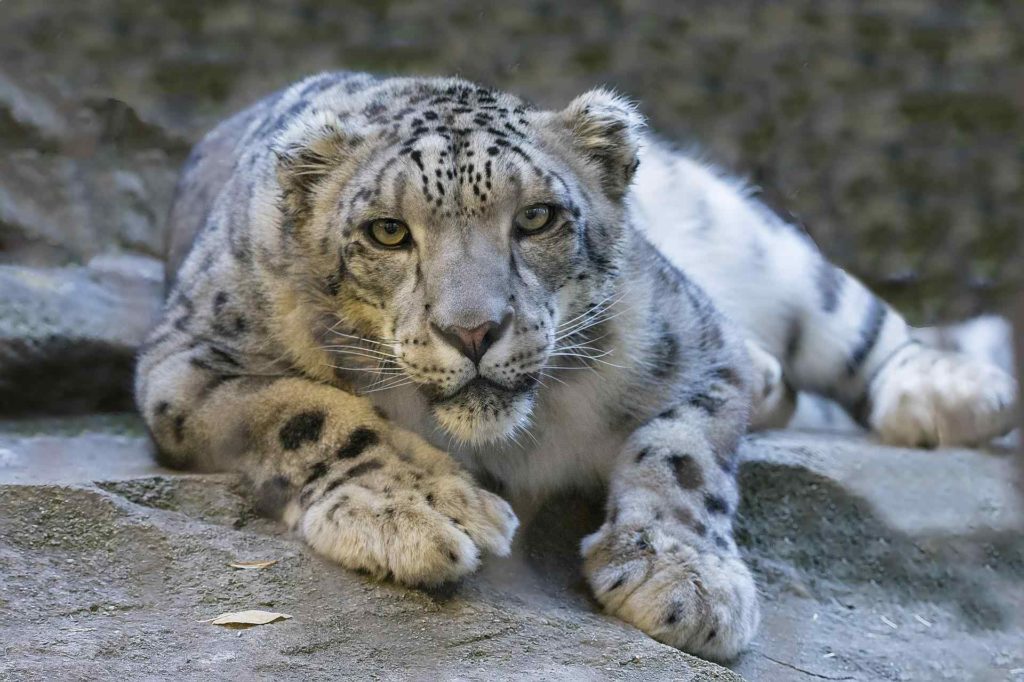
These are the common cold-conditions animals. Kindly share and practice post your comments.

Source: https://earthnworld.com/cold-weather-animals/
Posted by: myersborceir.blogspot.com

0 Response to "How Do Animals Survive The Winter Cold"
Post a Comment